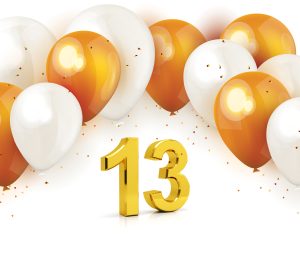Every city has its noteworthy citizens—artists, researchers, educators, activists—but St. Louis seems to have more than its share. We think of them as icons, people we associate with our city and/or its institutions, and we’ve shined the spotlight on a few of them here. They contribute to the community in meaningful ways, and in some cases, their influence has extended well beyond.
[frankie muse freeman]
Signs of 97-year-old Frankie Muse Freeman’s accomplishments are everywhere in her Central West End apartment. Dozens of awards line a bookshelf, and photos of Freeman with one president after another adorn the walls.
The attorney has spent her life working tirelessly for civil rights causes. She was part of the NAACP legal brain trust involved in the 1949 Brewton v. the Board of Education of St. Louis, which challenged school segregation. And she was lead attorney in 1954’s Davis et al. v. the St. Louis Housing Authority, which made it illegal to discriminate based on race in public housing.
From 1964 to 1980, Freeman served on the U.S. Civil Rights Commission, the first woman to hold the position. Her early work for the commission, including investigations of voter discrimination, contributed to the Voting Rights Act of 1965. “I just wanted to eliminate racism and discrimination, but I didn’t anticipate I’d have a presidential appointment—I just wanted to be a lawyer,” she says. “It’s part of my religion, trying to be of service and make a change.”
Born in 1916 in Virginia, Freeman’s parents instilled her with a strong sense of pride and civic duty. “They taught me never to acquiesce in discrimination,” she says. “Instead of riding the bus, we’d walk. As Christians, we also were taught not to break the law, so instead I wanted to work to change the law.”
After graduating second in her law class from Washington, D.C.’s, Howard University in 1947, Freeman moved to St. Louis to be near her husband Shelby’s family. The two met in New York after the University of Missouri, rather than admit Shelby, paid his way to attend a teacher’s college, a common practice among Southern schools at the time. “I met him at a Baptist church in Harlem,” Freeman says. “Of all the evils of racial discrimination, at least I met Shelby.”
In St. Louis, unable to find work with an existing law firm, Freeman opened her own offices in the Jefferson Bank Building in 1949 and practiced law for 62 years. She published her memoir, A Song of Faith and Hope, in 2003 and was awarded the NAACP’s Springarn Medal, the organization’s highest honor, in 2011. She also has been inducted into the National Bar Association Hall of Fame and the International Civil Rights Walk of Fame.
Rather than rest on her laurels, Freeman still strives for change. “It’s my passion and my life,” she says. “There’s still work to be done, and one of the things I can still do is encourage people. Everybody has an individual responsibility to be a good citizen and do their best to be of service.”
– Stephanie Zeilenga
[charlie brennan]

If you have a Ted Drewes concrete named for you, it’s safe to assume you’re a big deal in these parts. Charlie Brennan, KMOX radio personality of 25 years and
host of Donnybrook, earned that distinction earlier this year when the beloved custard stand released Brennan’s Blend, a mixture of “Abaco mocha” and hazelnut topped with caramel. It’s a fitting tribute to a man whose career has added plenty of flavor to the St. Louis airwaves and beyond.
The Cleveland native got his start in broadcasting by volunteering for the Boston College radio station, then he worked in Boston before applying for a position with KMOX in 1988. When Brennan arrived, he wasn’t impressed. “I first thought the city was boring, really dullsville,” he remembers. “There was nobody downtown. I lived in the Mansion House Apartments for a while, and they didn’t even put the Post-Dispatch in the box there.”
His opinion changed as St. Louis developed and diversified and his understanding of the city deepened. “Now there are young people in downtown St. Louis where there never were,” he says. “I’m amazed to see the 20-something women who live down there—they sure weren’t when I lived there; I know, because I was looking for them!” Brennan cites the development in St. Charles and the installation of Metrolink as other significant changes he’s witnessed. “When I moved here, the city had never had a black mayor or county executive or fire chief, and I’ve seen all that since I’ve been here,” he says. “I think we’re making a lot of progress in a lot of good ways.”
Brennan has led a number of campaigns to improve the region, ranging from beautifying highways to restoring medical benefits for the blind. He cites fundraising for the Loop’s Chuck Berry statue in 2011 as one of his favorite efforts. “We raised the money during the worst recession since the Depression,” Brennan says. “There were a few causes that were more important than a statue of a rock star, but … I thought it was important for St. Louis to embrace this native son.”
Retaining young talent that graduates from the city’s universities is on Brennan’s wish list for St. Louis, as is expanding appreciation for the area’s history. To that end, last year he published Amazing St. Louis: 250 Years of Great Tales and Curiosities. “I’m finding a lot of St. Louisans are unfamiliar with the great achievements of St. Louis history,” he says. “If they knew, they’d feel more proud about the area in which they live … and they’d be inspired to accomplish great things.”
– Rebecca Koenig
[joe edwards]

Colorful neon lights up the night on the Delmar Loop. People stroll the sidewalks, popping into shops, enjoying a meal or a drink outside, or perhaps heading to a bowling game or movie. Now one of the 10 Great Streets in America, according to the American Planning Association, the Loop’s current success is largely thanks to Joe Edwards, whose blond ponytail and penchant for Hawaiian shirts make him as much a Loop icon as the stone lions guarding its west entrance.
When Edwards opened Blueberry Hill in 1972, the Loop was a crime-ridden area lined with abandoned storefronts—a far cry from its glory days as a high-fashion shopping district in the first half of the 20th century. He realized his beloved restaurant and music venue would survive only if the entire street were revitalized, and ever since he has tirelessly worked to make improvements wherever he’s seen a glimmer of opportunity.
First, he formed the Loop Special Business District, bringing community leaders together to tackle various issues. Since then he’s created the St. Louis Walk of Fame, saved the circa 1924 Tivoli Theatre, and opened The Pageant, Pin-Up Bowl and Moonrise Hotel, a AAA four-diamond hostelry.
His businesses have erased the stigma of crossing Skinker Boulevard into the city, brought a robust music scene to the area, and made sure visitors have plenty of unique, fun places in which to spend time. Presidents, musicians and movie stars have dropped in to see Edwards—photographic proof lines the walls of Blueberry Hill. “This is the way you build a liveable, walkable street,” he says. “Crime is at a 40-year low, the area is racially and economically diverse, and it’s marvelous. It’s the way America should be.”
Edwards’ transformation from passionate St. Louisan to civic leader occurred around the time he purchased and restored the Tivoli Theatre in the mid-’90s. “That’s when I changed my whole way of looking at life,” he says. “I didn’t have much money at the time, but it was worth it and taught me about how much bigger an impact I could have if I was willing to take risks.”
It’s a leadership role he’s gladly taken on, but never expected. “Not in a million years,” he says. “I never expected to own any building other than Blueberry Hill’s building.”
And there’s no sign he’s slowing down. In September, Edwards will open Peacock Loop Diner, a 24-hour establishment. For the past few years he’s also worked to revitalize the Loop’s trolley system. Funded by federal stimulus money, the track will connect The Loop to Forest Park and is expected to be completed in spring 2016.
– Stephanie Zeilenga
[dr. marcus e. raichle]

One great science class set Dr. Marcus E. Raichle on a research path that revolutionized cognitive neuroscience. “I didn’t go to university to be a doctor; I went there to be a lawyer,” recalls Raichle, now a Washington University professor. Needing to fulfill a science requirement, he signed up for a zoology class taught by Dixy Lee Ray, the future governor of Washington state, where Raichle attended college. “It absolutely captured my imagination,” he says. That semester changed his course—and ultimately the trajectory of brain research.
After taking a fifth undergraduate year to catch up on chemistry and biology classes, Raichle started medical school at the University of Washington, then followed his mentor, neurologist Dr. Fred Plum, to Cornell University’s medical school. “I had a research bug, and Dr. Plum was interested in the brain, blood flow and metabolism, and that really captured my imagination as well,” Raichle says.
Raichle served in the Air Force, then in 1971 joined the radiology department at WUSTL, where an interdisciplinary team of scientists was working to measure oxygen consumption in the human brain. “I was an appointment in neurology, but my lab was in radiology, and I was surrounded by computer scientists and chemists,” he says. Within 18 months, scientists in England invented the CT scanner, which uses X-ray technology to create pictures of living people’s brains. The possibility of seeing even more was tantalizing, Raichle says: “Maybe we could map how the brain was working.” The WUSTL team set to work trying to improve the process, and Raichle’s research contributed to the development of positron emission technology (PET), now essential to oncologists, neurosurgeons and cardiologists. “Right outside of my office, they created the PET scanner,” Raichle says. “We could electronically slice up the brain without hurting anyone.”
That was just the start of Raichle’s contributions to the field. A 1988 study he and his colleagues published in Science about the brain’s metabolism and blood and oxygen use contributed significantly to the understanding of how energy is used in the brain—which was critical to advancing brain-mapping research. Raichle then turned his attention to the brain’s ‘dark energy,’ or the cognitive activity occurring while the mind is seemingly at rest. The brain’s default mode network, a phrase Raichle coined, has important implications for memory and disease research, especially regarding Alzheimer’s. “It’s been remarkable,” Raichle says. “This whole story about the internal activity was not on anybody’s radar screen. It just became the poster child of how the brain is organized.”
Although international collaborations influence his work, Raichle appreciates the support St. Louis provides for research at WUSTL, citing philanthropists like
James S. McDonnell. “Their contributions to Washington University, not just to me, are really invaluable,” he says. “You have to build a sense of community and a value for its institutions. I think it’s a special place, actually.”
– Rebecca Koenig







